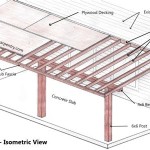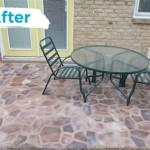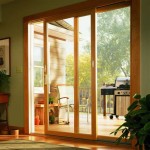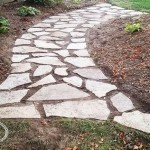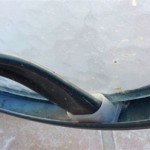Patio Brick Edging: Enhancing Aesthetics and Functionality
Patio brick edging serves as a practical and visually appealing element in landscape design. It defines the boundaries of a patio, separates it from adjacent areas like lawns, gardens, or walkways, and contributes significantly to the overall aesthetic appeal of the outdoor space. Choosing the right brick edging involves considerations of materials, styles, installation methods, and maintenance requirements.
Brick edging offers a durable and long-lasting solution for patio definition. Unlike some other edging materials, brick stands up well to weathering, temperature fluctuations, and general wear and tear. The inherent weight of bricks helps to maintain its position and resist displacement by foot traffic or environmental factors. Furthermore, brick provides a natural look that blends harmoniously with various landscape styles, from traditional to contemporary.
The selection of brick for patio edging requires careful evaluation based on several factors. Color, size, and texture play a vital role in creating the desired aesthetic effect. The chosen brick should ideally complement the patio material itself and the surrounding landscape elements. Beyond aesthetics, durability and resistance to the local climate are crucial considerations to ensure longevity and minimize maintenance.
Understanding the Benefits of Patio Brick Edging
Patio brick edging delivers a range of advantages beyond simple aesthetic appeal. It provides structural support, enhances safety, and simplifies lawn maintenance, making it a worthwhile investment for homeowners seeking to improve their outdoor living spaces.
Firstly, brick edging provides structural support to the patio pavers. By containing the pavers within a defined border, the edging prevents them from shifting or spreading over time. This is particularly important in areas with heavy foot traffic or where the soil is prone to movement. The edging effectively acts as a retaining wall, keeping the patio surface stable and level.
Secondly, brick edging enhances safety by creating a clearly defined edge. This is especially beneficial for patios adjacent to lawns or gardens, where the transition between surfaces might not be immediately apparent. The raised edge of the brick provides a tactile and visual cue, reducing the risk of tripping or stepping off the patio unexpectedly, particularly at night or in low-light conditions.
Thirdly, brick edging significantly simplifies lawn maintenance around the patio. It creates a physical barrier that prevents grass from encroaching onto the patio surface, reducing the need for frequent trimming and weeding. The defined edge also makes it easier to mow the lawn neatly along the perimeter of the patio, resulting in a cleaner and more manicured appearance.
Exploring Different Styles and Installation Methods
The versatility of brick allows for a wide range of styles and installation methods, enabling homeowners to customize their patio edging to suit their individual preferences and the overall aesthetic of their outdoor space. From simple straight edges to intricate curved designs, the possibilities are extensive.
A common style is the simple straight edge, often used for patios with a rectangular or square shape. This method involves laying bricks in a straight line along the perimeter of the patio, creating a clean and defined border. The bricks can be laid end-to-end or side-by-side, depending on the desired width of the edging. This is a relatively straightforward installation method, suitable for DIY projects.
For patios with curved or irregular shapes, a more flexible installation method is required. This can involve using smaller bricks or pavers that can be easily shaped to follow the contours of the patio. Alternatively, flexible edging materials can be used to create the desired curves, and then faced with brick to achieve the desired aesthetic. This method requires more careful planning and execution.
Another popular style is the raised edge, where the brick edging is installed slightly higher than the patio surface. This creates a more pronounced visual separation between the patio and the surrounding areas. A raised edge can also help to prevent water from running off the patio and onto the lawn or garden.
The installation process typically involves excavating a shallow trench around the perimeter of the patio, compacting the soil, and laying a bed of gravel or sand as a base for the bricks. The bricks are then carefully positioned and leveled, ensuring that they are securely in place. A polymeric sand or mortar can be used to fill the gaps between the bricks, providing additional stability and preventing weed growth.
Maintaining Patio Brick Edging for Longevity
Proper maintenance is essential to preserve the appearance and structural integrity of patio brick edging. Regular cleaning, weed control, and occasional repairs will help to ensure that the edging remains in good condition for many years to come.
Regular cleaning is crucial to remove dirt, debris, and algae from the surface of the bricks. A simple sweep with a broom or a rinse with a garden hose is often sufficient to remove loose dirt and debris. For more stubborn stains, a mild detergent and a scrub brush can be used. Avoid using harsh chemicals or abrasive cleaners, as these can damage the bricks.
Weed control is another important aspect of maintenance. Weeds can grow in the gaps between the bricks, detracting from the appearance of the edging and potentially damaging the underlying structure. Regular weeding by hand or the application of a weed killer can help to keep the edging free of weeds. Polymeric sand, which hardens when wet, can also help to prevent weed growth in the joints between the bricks.
Over time, the bricks may become loose or damaged due to weathering, foot traffic, or soil movement. Loose bricks should be re-set and leveled, and damaged bricks should be replaced. If mortar or polymeric sand is used to fill the gaps between the bricks, it may need to be reapplied periodically to maintain its effectiveness.
In regions with harsh winters, it is important to protect the brick edging from damage caused by freezing and thawing. Applying a sealant to the bricks can help to prevent water from penetrating the surface and causing cracks or chips. Removing snow and ice from the patio surface can also help to reduce the risk of damage.
Choosing appropriate materials and performing proper installation are crucial first steps toward ensuring long-lasting brick edging. Selecting high-quality bricks that are resistant to the local climate conditions is important. Moreover, taking time during installation to properly level the base and secure the bricks in place will minimize future maintenance issues. Professional installation can also offer greater assurance of a durable and aesthetically pleasing result.
By following these maintenance tips and addressing any issues promptly, homeowners can ensure that their patio brick edging remains an attractive and functional feature of their outdoor space for years to come. Regular inspection will help to identify potential problems early, before they escalate into more significant and costly repairs. Proactive maintenance is the most effective way to preserve both the visual appeal and structural integrity of patio brick edging.

How To Install Brick Edging Around A Patio Building Bluebird

Proflex 6 Ft Paver Edging In Black 1260 Hd The Home Depot

What Is The Best Edging For Pavers Perfect

How To Install Brick Edging Around A Patio Building Bluebird

5 Beautiful Paver Edge Restraint Options Western Interlock
:strip_icc()/SIP867970-58e69ea9a6bf433c8be3a807970ce769.jpg?strip=all)
How To Install Edging

How To Install Brick Edging Around A Patio Building Bluebird

Beautiful Paver Patio Edging Ideas To Style Your Bexley Oh Landscape Arj
:strip_icc()/SCM_084_05-bacd74f7e95a437485c4de8b0ff006bb.jpg?strip=all)
How To Install Edging

Result For Grey Paving With Brick Edging Patio Garden Design Stones

